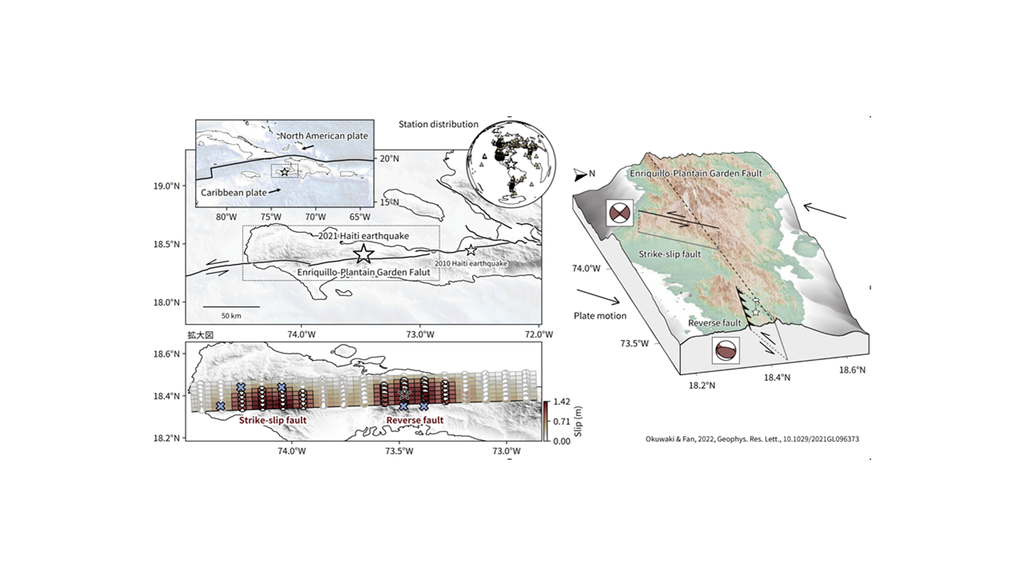・The M 7.2 2021 Haiti earthquake sequentially ruptured two disconnected thrust and strike-slip faults
・Neither the thrust nor strike-slip fault aligns with the Enriquillo-Plantain Garden fault configuration
・Faulting variability of the earthquake likely reflects the complex deformation partition at the tectonic boundary
Abstract
A devastating magnitude 7.2 earthquake struck Southern Haiti on 14 August 2021. The earthquake caused severe damage and over 2000 casualties. Resolving the earthquake rupture process can provide critical insights into hazard mitigation. Here we use integrated seismological analyses to obtain the rupture history of the 2021 earthquake. We find the earthquake first broke a blind thrust fault and then jumped to a disconnected strike-slip fault. Neither of the fault configurations aligns with the left-lateral tectonic boundary between the Caribbean and North American plates. The complex multi-fault rupture may result from the oblique plate convergence in the region, so that the initial thrust rupture is due to the boundary-normal compression and the following strike-slip faulting originates from the Gonâve microplate block movement, orienting SW-NE direction. The complex rupture development of the earthquake suggests that the regional deformation is accommodated by a network of segmented faults with diverse faulting conditions.
Benefit
・Identify two distinct rupture episodes of the Mw7.2 2021 Haiti earthquake using a novel finite-fault inversion technique based on a potency-density tensor approach.
Market Application
・Seismic source inversion and simulation
・Providing a robust and flexible seismic source model
Publications
https://agupubs.onlinelibrary.wiley.com/doi/epdf/10.1029/2021GL096373
Other
https://www.tsukuba.ac.jp/en/research-news/20220121140000.html

